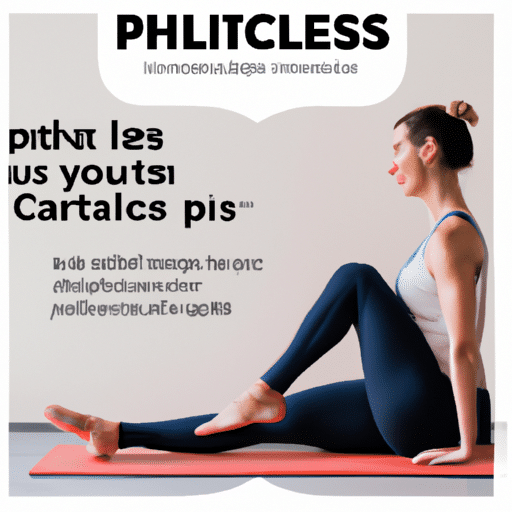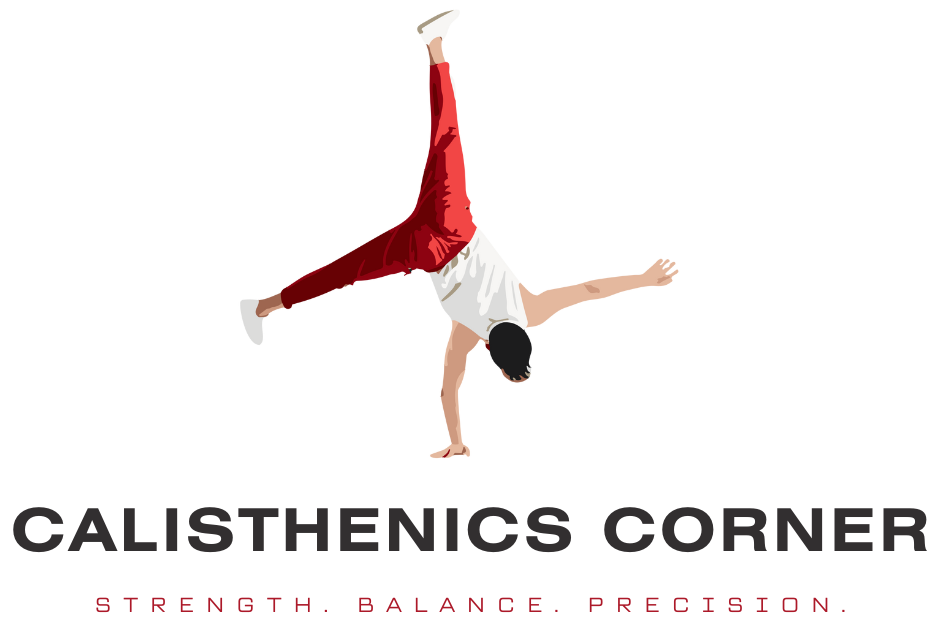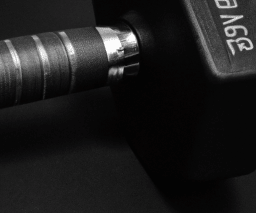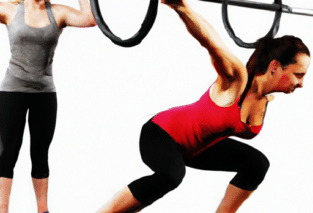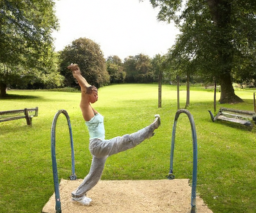Imagine if you could achieve the strength, flexibility, and grace of a professional athlete without the need for complicated equipment or intense cardio workouts. In the article “Is Pilates Calisthenics?”, you’ll explore the fascinating world of Pilates and discover whether it falls under the category of calisthenics. From its origins as a rehabilitation method to its modern-day popularity, this article will provide insights into the similarities and differences between the two exercise routines. So, get ready to uncover the secrets behind Pilates and its potential as a calisthenics workout.
What is Pilates?
Pilates is a form of exercise that focuses on the alignment, strength, and flexibility of the body. It was developed by Joseph Pilates in the early 20th century as a way to improve overall physical fitness and mental well-being. Pilates is known for its emphasis on core strength, proper breathing, and controlled movements. It is a low-impact exercise that can be modified for individuals of all fitness levels and abilities. Pilates exercises are typically performed on a mat or using specialized equipment such as the reformer, Cadillac, and chair.
History of Pilates
The history of Pilates dates back to the early 1900s when Joseph Pilates, a German physical trainer, developed a system of exercises to improve physical and mental health. Originally called “Contrology,” Pilates’s method aimed to strengthen the body without adding excessive bulk. During World War I, Pilates used his exercises to rehabilitate injured soldiers. After moving to the United States in the 1920s, he opened a studio in New York City, where his method gained popularity among dancers and athletes. Today, Pilates is practiced worldwide and has evolved into various styles and techniques.
Principles of Pilates
Pilates is based on a set of principles that guide the practice and ensure its effectiveness. These principles include concentration, control, centering, precision, breath, and flow. Concentration involves focusing the mind on executing each movement with full attention and awareness. Control refers to maintaining control over the body’s movements throughout the exercises. Centering is about utilizing the body’s core muscles as a foundation for stability and strength. Precision emphasizes the importance of performing each movement with accuracy and proper alignment. Breath is an integral part of Pilates, with emphasis on deep, diaphragmatic breathing. Flow refers to the smooth and continuous transitions between exercises, creating a harmonious flow of movement.
Benefits of Pilates
Pilates offers numerous benefits for both the body and mind. It helps improve core strength, which is essential for stability and proper alignment. By targeting the deep muscles of the abdomen, back, and pelvic floor, Pilates helps build a strong center, leading to improved posture and reduced risk of injuries. Pilates also enhances flexibility and range of motion, making it an excellent choice for individuals looking to improve their overall mobility. Additionally, Pilates promotes body awareness and mindfulness by emphasizing the mind-body connection and encouraging participants to focus on their breath and movement. It can also aid in stress reduction and relaxation.
What are Calisthenics?
Calisthenics, often referred to as bodyweight training, is a form of exercise that uses one’s body weight as resistance to build strength, endurance, and flexibility. It involves performing a variety of movements such as push-ups, squats, lunges, and planks, without the need for equipment or weights. Calisthenics exercises can be performed anywhere, making them a popular choice for individuals who prefer to exercise outdoors or have limited access to a gym. Calisthenics is suitable for people of all fitness levels and can be adapted to suit individual goals and abilities.
Definition of Calisthenics
Calisthenics derives its name from the Greek words “kallos” (meaning beauty) and “sthenos” (meaning strength). It is a form of exercise that focuses on using the body’s own weight and gravity to build strength, improve cardiovascular fitness, and enhance flexibility. Calisthenics exercises often involve compound movements that target multiple muscle groups simultaneously. These exercises can be performed in various ways, including static holds, dynamic movements, and explosive jumps. The versatility of calisthenics allows for a wide range of exercises and training styles, making it suitable for individuals of all fitness levels.
Types of Calisthenics Exercises
Calisthenics encompasses a wide array of exercises, each targeting different muscle groups and fitness components. Some common calisthenics exercises include push-ups, pull-ups, squats, lunges, planks, burpees, and handstands. These exercises can be modified and progressed to suit different fitness levels. Advanced calisthenics movements may include muscle-ups, pistol squats, human flag, and planche. Calisthenics exercises can be performed using various techniques, such as high-intensity intervals, circuit training, or slow, controlled movements for muscle endurance. The versatility of calisthenics allows for endless possibilities in designing workouts tailored to specific goals and preferences.
Benefits of Calisthenics
Calisthenics offers several benefits that make it a popular choice among fitness enthusiasts. By using one’s body weight as resistance, calisthenics naturally develops functional strength and helps improve overall body composition. It promotes lean muscle growth and increases muscular endurance without the need for extensive equipment or heavy weights. Calisthenics also enhances cardiovascular fitness, as many exercises involve dynamic movements and elevate the heart rate. Additionally, calisthenics improves flexibility and mobility, as many movements require a wide range of motion. Regular practice of calisthenics can lead to improved body control, coordination, and agility.
Differences Between Pilates and Calisthenics
While both Pilates and calisthenics are forms of exercise that focus on strength, flexibility, and overall fitness, there are several key differences that set them apart.
Focus and Purpose
Pilates primarily focuses on core strength, stability, and proper alignment. It aims to improve overall body awareness and posture while targeting specific muscle groups. Calisthenics, on the other hand, emphasizes full-body strength and endurance using bodyweight exercises. It aims to develop functional strength and build lean muscle mass.
Movement Patterns and Exercises
Pilates exercises often involve controlled, slow movements with an emphasis on proper form and alignment. The movements are typically performed in a controlled and precise manner to target specific muscles. Calisthenics exercises, on the other hand, involve a wide range of movements, including dynamic, explosive, and high-intensity exercises. Calisthenics often incorporates compound movements that engage multiple muscle groups simultaneously.
Equipment
Pilates can be performed on a mat or using specialized equipment such as the reformer, Cadillac, and chair. These equipment provide additional resistance and support for various exercises. Calisthenics, on the other hand, requires little to no equipment, as it primarily relies on bodyweight resistance. However, some individuals may choose to incorporate equipment such as resistance bands or suspension trainers to add variety to their calisthenics workouts.
Intensity and Resistance
Pilates is often known for its low-impact nature and focus on controlled movements. While it can be challenging, it may not provide the same level of intensity and resistance as calisthenics. Calisthenics workouts can be adjusted to different intensity levels, with options for high-intensity interval training or advanced movements that require significant strength and endurance.
Flexibility and Mobility
Pilates places a strong emphasis on flexibility and improving range of motion. Many Pilates exercises are designed to lengthen and stretch muscles, promoting flexibility and mobility. Calisthenics, while it can improve flexibility to some extent, does not place as much emphasis on stretching and mobility training.
Similarities Between Pilates and Calisthenics
While there are notable differences between Pilates and calisthenics, they also share several similarities, making them complementary practices.
Bodyweight Exercises
Both Pilates and calisthenics utilize bodyweight exercises as a primary form of resistance. By using one’s own body weight, both forms of exercise develop strength, endurance, and improve overall body composition.
Core Strength
Both Pilates and calisthenics place a strong emphasis on core strength. A strong core is essential for stability, proper posture, and injury prevention. Pilates targets the core muscles through specific exercises, while calisthenics engages the core in various movements to maintain stability and control.
Stability and Balance
Both Pilates and calisthenics help improve stability and balance. Pilates focuses on developing stability through controlled movements and strengthening the deep core muscles. Calisthenics, with its emphasis on body control and coordination, also enhances stability and balance through a wide range of movements.
Improved Posture
Pilates and calisthenics can both contribute to improved posture. By strengthening the core and promoting proper alignment, Pilates helps correct postural imbalances and encourages a more upright posture. Calisthenics exercises, which often engage the back, shoulder, and core muscles, can also help improve posture by strengthening the muscles responsible for maintaining an upright position.
Mind-Body Connection
Both Pilates and calisthenics emphasize the mind-body connection. They encourage individuals to be fully present and aware of their movements, breathing, and body alignment. By focusing on the mind-body connection, both practices promote mindfulness and enhance body awareness.
Combining Pilates and Calisthenics
Combining Pilates and calisthenics can offer a well-rounded and comprehensive approach to fitness. The integration of these two practices can provide numerous benefits for strength, flexibility, mobility, and overall physical well-being.
Benefits of Combination
The combination of Pilates and calisthenics can enhance the benefits of each practice. Pilates can improve core strength, stability, and flexibility, which are essential for performing calisthenics movements with proper form and alignment. Calisthenics, on the other hand, can complement Pilates by adding variety, intensity, and functional strength training to the workout routine.
Sample Workouts
When combining Pilates and calisthenics, it is important to design workouts that incorporate exercises from both practices. A sample workout routine could include a warm-up of Pilates-based exercises to activate the core and improve joint mobility. This could be followed by a series of calisthenics movements, such as push-ups, squats, lunges, and planks, to target different muscle groups and increase overall strength. Ending the workout with a cool-down of Pilates-based stretches can help promote flexibility and prevent muscle soreness.
Considerations for Beginners
For beginners, it is essential to start slowly and gradually increase the intensity and complexity of the exercises. It is recommended to seek guidance from a certified Pilates instructor or calisthenics coach to ensure proper form and technique. Additionally, it is important to listen to your body and modify exercises as needed to avoid injuries. Starting with beginner-level Pilates exercises and basic calisthenics movements is a great way to build a solid foundation before progressing to more advanced workouts.
Is Pilates considered a form of Calisthenics?
The question of whether Pilates is considered a form of calisthenics can be subjective, as different experts and individuals may have different perspectives and interpretations.
Expert Opinions
Some fitness experts may argue that Pilates can be classified as a form of calisthenics, as both practices utilize bodyweight exercises to develop strength, flexibility, and overall fitness. Both Pilates and calisthenics focus on proper form, control, and body awareness. However, other experts may view Pilates as a distinct practice that has its own set of principles and techniques separate from calisthenics.
Different Perspectives
Individuals who are familiar with both Pilates and calisthenics may have different perspectives on their similarities and whether Pilates can be considered a form of calisthenics. Some may see the overlap in terms of bodyweight exercises and core strength, while others may emphasize the unique aspects of each practice.
Semantic Interpretation
Semantically, the term “calisthenics” refers specifically to exercises that utilize bodyweight as resistance. Pilates, although it includes bodyweight exercises, is a distinct method with its own principles and techniques. From a semantic standpoint, Pilates may not be considered a form of calisthenics, but rather a separate practice that incorporates bodyweight exercises in its repertoire.
Choosing Between Pilates and Calisthenics
Choosing between Pilates and calisthenics ultimately depends on individual preferences, fitness goals, accessibility, and considerations for potential risks or injuries.
Fitness Goals
If the primary goal is to improve core strength, flexibility, and posture, Pilates may be the ideal choice. Pilates focuses on targeted muscle groups and can be beneficial for individuals seeking a low-impact workout. On the other hand, if the goal is to develop overall strength, endurance, and functional fitness, calisthenics may be a better fit. Calisthenics offers a wide range of exercises that target multiple muscle groups simultaneously and can be adapted to various intensity levels.
Preference and Enjoyment
Personal preference and enjoyment play a significant role in staying motivated and committed to a fitness routine. Some individuals may prefer the calm and focused environment of a Pilates studio, while others may thrive in the dynamic and high-energy atmosphere of calisthenics. Trying out both practices and determining which one feels most enjoyable and sustainable is important in making the right choice.
Accessibility
Consider the availability of Pilates studios or calisthenics facilities in your area. Pilates classes are commonly offered at fitness centers, dedicated studios, or can be done at home using online resources. Calisthenics, on the other hand, can be practiced anywhere without the need for equipment or a specific location. Access to equipment or specific training facilities may also influence the decision.
Risk Factors and Injuries
Another consideration is the presence of any pre-existing health conditions or injuries. Pilates, with its emphasis on controlled movements and alignment, may be a suitable option for individuals with certain injuries or joint issues. Calisthenics, particularly advanced movements or high-intensity workouts, could pose a higher risk of injury for individuals with limited mobility or underlying health conditions. It is essential to consult with a medical professional or fitness expert before beginning any exercise program, particularly if there are concerns regarding specific health conditions or injuries.
Conclusion
Pilates and calisthenics offer distinct approaches to fitness and overall well-being. While Pilates focuses on core strength, stability, and alignment, calisthenics emphasizes bodyweight exercises that improve functional strength and overall fitness. Both practices share similarities, such as bodyweight exercises, core strength, stability, improved posture, and a mind-body connection. Combining Pilates and calisthenics can provide a well-rounded approach to fitness, with benefits for strength, flexibility, mobility, and overall physical well-being. Ultimately, the choice between Pilates and calisthenics depends on individual preferences, fitness goals, accessibility, and considerations for potential risks or injuries. Seeking professional advice from certified instructors or coaches can help guide the decision-making process and ensure a safe and effective fitness journey.
